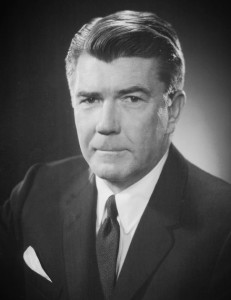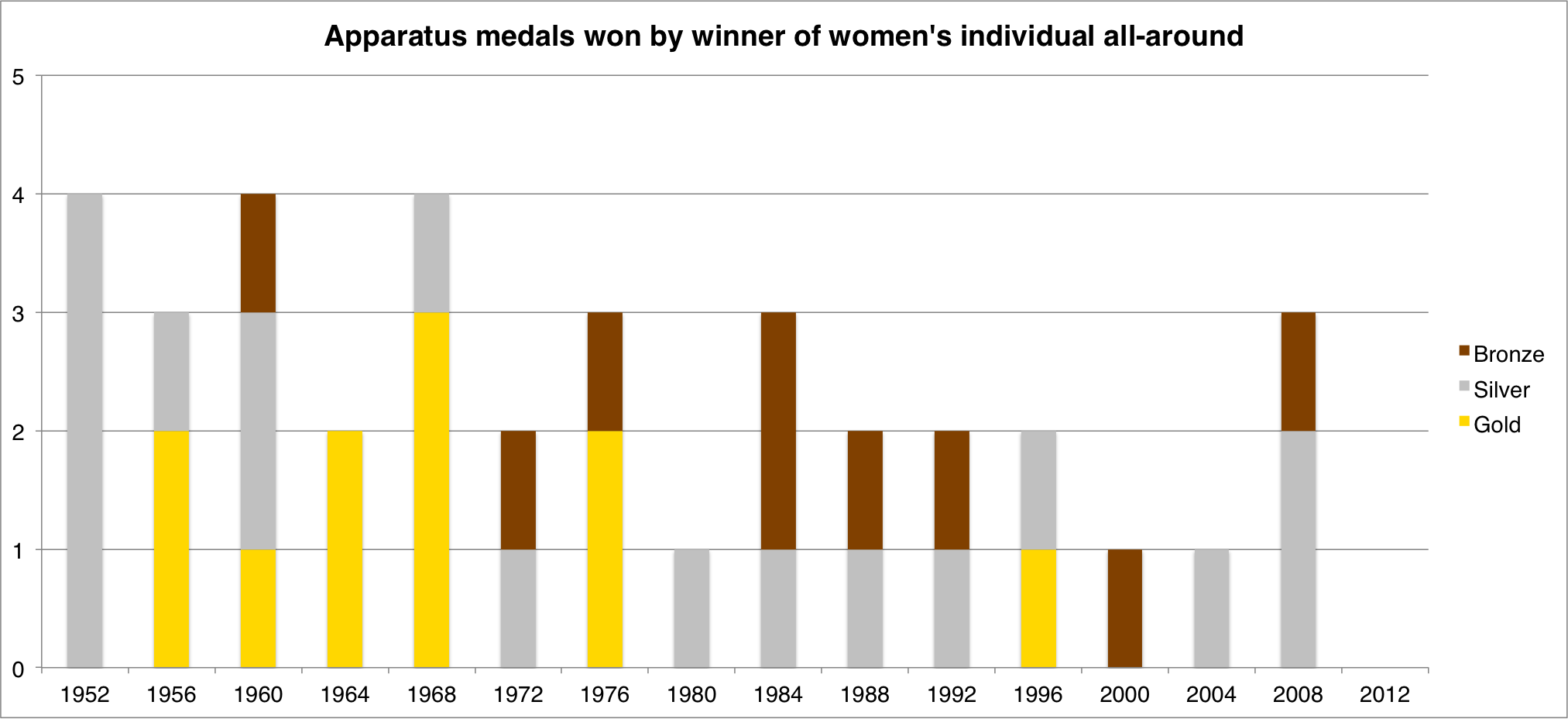OlympStats reader David Clark of Australia asked, “What is the shortest or longest time an Olympian has been able to enjoy their Olympic medal prior to their death?” A great question and one we had to work on a little bit to get all the details.
Fully 45 athletes have died within one year of winning their final Olympic medal. Göpf Kottmann, a Swiss rower from 1964, died only 22 days after winning his single sculls bronze medal, closely followed by Swedish fencer Gösta Algren, who lived only 23 days after his fencing team épée silver in 1936. American archer G. C. Spencer won a gold medal in the 1904 team archery event, but enjoyed it for only 28 days, although he was 64-years-old when he won his medal. Here are the 36 that died within 275 days of winning an Olympic medal – an arbitrary number we chose because it gets us to the 1948 Czechoslovakian ice hockey airplane tragedy, in which six of their players died in the crash of their charter plane flying from Paris to London for a match.
[table]
Age2Dth,Died,Name,Gdr,NOC,Ssn,Year,Spt,Event,Med,YB,YE,YD
0-022,32,Göpf Kottmann,M,SUI,S,1964,ROW,Single Sculls,B,1932,1964,1964
0-023,30,Gösta Almgren,M,SWE,S,1936,FEN,Épée Team,S,1906,1936,1936
0-028,64,G. C. Spencer,M,USA,S,1904,ARC,Team,G,1840,1904,1904
0-048,27,Rich Sanders,M,USA,S,1972,WRE,Light-Middle FS,S,1945,1972,1972
0-062,24,Piet Salomons,M,NED,S,1948,WAP,Water Polo,B,1924,1948,1948
0-068,30,Miguel Caldés,M,CUB,S,2000,BSB,Baseball,S,1970,2000,2000
0-081,23,José de Figueroa,M,ESP,S,1920,POL,Polo,S,1897,1920,1920
0-088,35,David Bratton,M,USA,S,1904,WAP,Water Polo,G,1869,1904,1904
0-091,20,Bekzat Sattarkhanov,M,KAZ,S,2000,BOX,Light-Middleweight,G,1980,2000,2000
0-101,42,John Black,M,CAN,S,1924,SHO,Trap Team,S,1882,1924,1924
0-103,22,Waldemar Malak,M,POL,S,1992,WLT,Middle-Heavy,B,1970,1992,1992
0-106,33,Gösta Magnusson,M,SWE,S,1948,WLT,Light-Heavy,B,1915,1948,1948
0-113,15,Bianca Ambrosetti,F,ITA,S,1928,GYM,Team All-Around,S,1914,1928,1929
0-122,26,George Van Cleaf,M,USA,S,1904,WAP,Water Polo,G,1879,1904,1905
0-126,26,Yuliya Riabchynska,F,URS,S,1972,CAN,K1-500 m,G,1947,1972,1973
0-130,26,John B. Taylor,M,USA,S,1908,ATH,1600 medley relay,G,1882,1908,1908
0-143,23,Viktor Blinov,M,URS,W,1968,ICH,Ice Hockey,G,1945,1968,1968
0-150,45,Selwin Calverley,M,GBR,S,1900,SAI,20+ Ton,S,1855,1900,1900
0-151,22,Ivo Van Damme,M,BEL,S,1976,ATH,1500 metres,S,1954,1976,1976
0-161,24,Konrad Hirsch,M,SWE,S,1924,FTB,Football,B,1900,1924,1924
0-205,27,Joseph Olivier,M,FRA,S,1900,RUG,Rugby,G,1874,1900,1901
0-212,59,Petre Roşca,M,ROU,S,1980,EQU,Dressage Team,B,1922,1980,1981
0-212,25,Kostas Tsiklitiras,M,GRE,S,1912,ATH,Standing High Jump,B,1888,1912,1913
0-217,25,Kostas Tsiklitiras,M,GRE,S,1912,ATH,Standing Long Jump,G,1888,1912,1913
0-218,26,Sayed Jaffar,M,IND,S,1936,HOK,Hockey,G,1911,1936,1937
0-222,31,Radivoj Korać,M,YUG,S,1968,BAS,Basketball,S,1938,1968,1969
0-240,33,George Calnan,M,USA,S,1932,FEN,Épée Team,B,1900,1932,1933
0-246,33,George Calnan,M,USA,S,1932,FEN,Foil Team,B,1900,1932,1933
0-255,24,George Saling,M,USA,S,1932,ATH,110 m hurdles,G,1909,1932,1933
0-269,24,Miloslav Bednařík,M,TCH,S,1988,SHO,Trap,S,1965,1988,1989
0-274,30,Zdeněk Jarkovský,M,TCH,W,1948,ICH,Ice Hockey,S,1918,1948,1948
0-274,22,Miloslav Pokorný,M,TCH,W,1948,ICH,Ice Hockey,S,1926,1948,1948
0-274,25,Karel Stibor,M,TCH,W,1948,ICH,Ice Hockey,S,1923,1948,1948
0-274,31,Vilibald Šťovík,M,TCH,W,1948,ICH,Ice Hockey,S,1917,1948,1948
0-274,34,Ladislav Troják,M,TCH,W,1948,ICH,Ice Hockey,S,1914,1948,1948
[/table]
Bekzat Sattarkhanov
Now who was able to enjoy their medal for the longest time? Fifty-seven (57) now deceased Olympic medalists lived 75 or more years after winning their Olympic medal, led by Finnish gymnast Jalmari Kivenheimo, who won a silver medal in 1912 and lived 82 years, 111 days more (although this record is being broken by Clara Marangoni, who is still living – see below). American diver Aileen Riggin lived longer than any gold medalist after winning that gold, as she survived 82 years, 51 days after her victory in 1920 at age 14 – although technically this record has already been broken by a living Olympian – see the note at the end of the following table. Here are all those who lived 78 or more years after winning an Olympic medal:
[table]
Age2Dth,Died,Name,Gdr,NOC,Ssn,Year,Spt,Event,Med,YB,YE,YD
82-111,105,Jalmari Kivenheimo,M,FIN,S,1912,GYM,Team All-Around,S,1889,1912,1994
82-051,96,Aileen Riggin,F,USA,S,1920,DIV,Springboard,G,1906,1920,2002
80-229,105,Harry Prieste,M,USA,S,1920,DIV,Platform,B,1896,1920,2001
80-024,102,Babe Rockefeller,M,USA,S,1924,ROW,Coxed Eights,G,1902,1924,2004
79-185,95,Carolina Tronconi,F,ITA,S,1928,GYM,Team All-Around,S,1913,1928,2008
79-151,97,Cissie Stewart,F,GBR,S,1928,SWI,4 x 100 m FS relay,S,1911,1928,2008
79-137,97,Gertrude Ederle,F,USA,S,1924,SWI,400 m FS,B,1906,1924,2003
79-112,95,Carin Nilsson,F,SWE,S,1920,SWI,4 x 100 m FS relay,B,1904,1920,1999
79-066,97,Jam Handy,M,USA,S,1904,SWI,400 m Breaststroke,B,1886,1904,1983
79-044,99,Abel Kiviat,M,USA,S,1912,ATH,1500 m,S,1892,1912,1991
78-363,101,Attilio Pavesi,M,ITA,S,1932,CYC,Road Race Indiv,G,1910,1932,2011
78-357,103,Carmelo Camet,M,ARG,S,1928,FEN,Foil Team,B,1904,1928,2007
78-229,105,Lucien Démanet,M,FRA,S,1900,GYM,Individual All-Around,B,1874,1900,1979
78-220,99,Roger Beaufrand,M,FRA,S,1928,CYC,Sprint,G,1908,1928,2007
78-210,101,Herman Brix,M,USA,S,1928,ATH,Shot Put,S,1906,1928,2007
78-093,96,Aileen Riggin,F,USA,S,1924,DIV,Springboard,S,1906,1924,2002
78-064,98,Harry Glancy,M,USA,S,1924,SWI,4 x 200 m FS relay,G,1904,1924,2002
78-057,96,Max Décugis,M,FRA,S,1900,TEN,Doubles,S,1882,1900,1978
78-037,98,Georg Werner,M,SWE,S,1924,SWI,4 x 200 m FS relay,B,1904,1924,2002
[/table]
Aileen Riggin
The above record is at risk of being broken by a still-living Olympian. Evelyn Furtsch was an American sprinter who won a gold medal at the 1932 Olympics in the 4×100 relay, and is still alive as of October 2014 – 82 years, and about 90 days, after winning her Olympic medal.
So then we started thinking – who are the Olympians, not just medalists, who lived for the longest time or the shortest time after their final Olympic appearance? Here we measured the time not from the end of their event, but from the day of the Closing Ceremony.
Sadly, eight (8) Olympians did not live to see the Closing Ceremony. We know of the 11 Israelis who were murdered at München in 1972, with four of those having already competed as Olympians. Only two athletes died while competing in the Olympics – Knut Enemark Jensen, a Danish cyclist who succumbed during the 1960 cycling team time trial; and Francisco Lazaro, a Portuguese marathoner who died the day after the 1912 marathon.
Two athletes died during the Games after competing but not from the effects of the events or from being cowardly murdered. After losing his first match in 1936 featherweight boxing, Romanian Nicolae Berechet developed a carbuncle which quickly spread into blood poisoning and in the pre-antibiotic days, he died only three days after his Olympic bout, and two days before the Closing Ceremony. In 1956, Italian rower Arrigo Meniccoci competed in coxed eights, but after his event ended, he went for a car ride and was killed in a crash 7 days before the Closing Ceremony.
This does not include athletes who died in training, but never actually competed in the Olympics, such as Nodar Kumaritashvili, the Georgian luger who died the day before the 2010 Vancouver Opening Ceremony during a training run; Kazimierz Kay-Skrzypecki, the British/Polish luger who likewise died in training before the 1964 Innsbruck Games; Czechoslovak gymnast Eliska Mišaková, who developed polio after arriving in London for the 1948 Olympics, and died the day before the Opening Ceremony; or Australian downhiller skiier Ross Milne, who died before the Innsbruck Games after crashing on a training run.
Here are all the Olympians who died less than 7 weeks after the Closing Ceremony of an Olympics:
[table]
Age2Dth,AgeDth,Name,Gdr,Ssn,NOC,Sport,LastOly,YrBth,YrDth
-16 days,23,Knud Enemark Jensen,M,S,DEN,CYC,1960,1936,1960
-12 days,19,Francisco Lázaro,M,S,POR,ATH,1912,1891,1912
-7 days,24,Arrigo Menicocci,M,S,ITA,ROW,1956,1933,1956
-6 days,28,David Berger,M,S,ISR,WLT,1972,1944,1972
-6 days,28,Ze’ev Friedman,M,S,ISR,WLT,1972,1944,1972
-6 days,31,Yossef Romano,M,S,ISR,WLT,1972,1940,1972
-6 days,24,Eliezer Halfin,M,S,ISR,WRE,1972,1948,1972
-2 days,21,Nicolae Berechet,M,S,ROU,BOX,1936,1915,1936
0-007,23,Tony Zasada,M,S,CAN,ROW,1984,1960,1984
0-007,23,Moritz Heidegger,M,W,LIE,BOB,1956,1932,1956
0-013,32,Göpf Kottmann,M,S,SUI,ROW,1964,1932,1964
0-014,26,Jonatan Johansson,M,W,SWE,SNB,2006,1980,2006
0-015,29,Gösta Almgren,M,S,SWE,FEN,1936,1906,1936
0-027,23,Aurelio Janet,M,S,CUB,ATH,1968,1945,1968
0-029,22,Thomas Pleisch,M,W,SUI,ICH,1936,1913,1936
0-034,64,G. C. Spencer,M,S,USA,ARC,1904,1840,1904
0-037,27,Rich Sanders,M,S,USA,WRE,1972,1945,1972
0-042,21,Leo Portelance,M,S,CAN,SWI,1952,1931,1952
0-046,24,George Gardiner,M,S,GBR,WRE,1924,1900,1924
[/table]
Knud Enemark Jensen
What about those who lived the longest after their final Olympic appearance? Thirteen (13) Olympians lived for 80 or more years after they left the Olympic stage. Here is the list:
[table]
Age2Dth,AgeDth,Name,Gdr,Ssn,NOC,Sport,LstOly,YrBth,YrDth
86-210,103,Ivo Pavelić,M,S,YUG,SWI,1924,1908,2011
85-286,104,Signe Johansson,F,S,SWE,DIV,1924,1905,2010
82-311,102,Rezső Kende,M,S,HUN,GYM,1928,1908,2011
82-110,98,Maud Sundberg,F,S,SWE,ATH,1928,1911,2010
82-094,105,Jalmari Kivenheimo,M,S,FIN,GYM,1912,1889,1994
81-343,99,Helen Johns,F,S,USA,SWI,1932,1914,2014
81-338,102,Willem Winkelman,M,S,NED,ATH,1908,1887,1990
81-183,99,Elsa Andersson,F,S,SWE,DIV,1912,1894,1994
81-178,104,Andrejs Kapmals,M,S,RUS,ATH,1912,1889,1994
81-053,102,Hans Kleppen,M,W,NOR,SKJ,1928,1907,2009
80-228,104,Harry Prieste,M,S,USA,DIV,1920,1896,2001
80-141,100,John Dellert,M,S,USA,GYM,1904,1884,1985
80-014,102,Babe Rockefeller,M,S,USA,ROW,1924,1902,2004
[/table]
There are two additions to this list still alive – Clara Marangoni, an Italian gymnast from the 1928 Olympics, is the only known Olympian still alive who competed at the Amsterdam Games – she is now in her 86th year after her final Olympic appearance, and is close to bettering Pavelić’s mark; and Evelyn Furtsch, as mentioned above, now 82 years after her Olympic appearance.
While researching this topic we found another interesting tidbit. How many Olympic athletes never saw their 20th birthday? Sadly, it has happened eight times. An Italian gymnast from 1928, Bianca Ambrosetti, was the youngest, dying at age 15 after competing when she was 14. Three on this list died in the 1961 US Figure Skating tragedy when their plane crashed in Belgium while travelling to the 1962 World Championships. Here is the list of Olympic teenagers who died:
[table]
AgeDth,Name,Gender,Season,NOC,Sport,Oly,YrBth,YrDth
15,Bianca Ambrosetti,F,S,ITA,GYM,1928,1914,1929
17,Laurie Owen,F,W,USA,FSK,1960,1944,1961
18,Ray Hadley Jr.,M,W,USA,FSK,1960,1943,1961
18,Viktoriya Dimitrova,F,W,BUL,FSK,1992,1976,1994
19,Marián Havlíček,M,S,TCH,CAN,1972,1953,1972
19,Amar Garibović,M,W,SRB,CCS,2010,1991,2010
19,Ila Ray Hadley,F,W,USA,FSK,1960,1942,1961
19,Sandra Schmitt,F,W,GER,FRS,1998,1981,2000
[/table]
What about the other end of the spectrum? Fortunately, many Olympians have lived long, full lives. At least fifty-nine (59) Olympians have died after their 100th birthday (this is not always easy to track), led by Walter Walsh, American shooter from 1948, who died earlier in 2014 just short of his 107th birthday – the longest-lived Olympian ever.
So there you have it, David. Thanx for the interesting question and we hope we answered it for you.




